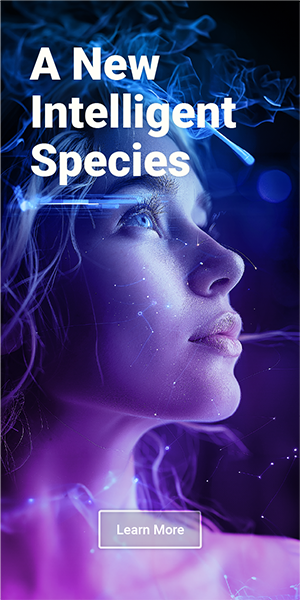If you look back at the last decade of consumer technology, it’s hard to ignore how quietly, then suddenly, AI slid into everyday life. It didn’t happen in one big moment. It arrived in waves: small conveniences, surprising advances, and the occasional disappointment that reminded us how far we still had to go.
The story of modern AI in everyday tech really begins in 2011, when Apple introduced Siri on the iPhone 4S. Siri wasn’t “intelligent” in the way we think of AI today, but it made one thing clear: people liked talking to technology if it actually did something useful.
You could set an alarm, ask about the weather, call someone, or run a basic search, hands-free. For millions of users, Siri normalised the idea that your phone wasn’t just a device; it could behave like a helper.
A few years later, Amazon and Google followed with Alexa and Google Assistant, and suddenly our homes and cars had their own voices. These assistants weren’t reasoning; they were recognising patterns and matching them with pre-built actions.
Still, they created a habit: people expected to interact with technology through natural language. That expectation would matter a lot when more powerful AI models came along.
Then came the shift that changed everything. Around 2018–2020, researchers discovered that when you scale language models to massive sizes and train them on huge amounts of text, something unexpected happens: they begin to generalise.
The release of GPT-3 in 2020 showed this clearly. A single model could write code, summarise text, translate languages, and answer questions without being retrained for each task. This was the beginning of the “foundation model” era.
But the real turning point wasn’t a research paper, it was a product.
In November 2022, ChatGPT launched. This was the moment AI became mainstream. Millions of people tried it out within days. For the first time, an average person could have a reasonably coherent conversation with an AI system that didn’t feel scripted.
It could explain things, brainstorm ideas, draft emails, outline essays, tasks people actually do every day. And in that moment, AI stopped feeling like a futuristic concept. It became a tool.
The pace only accelerated. OpenAI released GPT-4 in 2023, which handled more complex reasoning and added multimodal capabilities. You could show it an image and ask questions about it. It could process documents, analyse charts, and help structure more involved workflows.
Businesses began experimenting with using these models to handle parts of customer service, onboarding, sales, and support, always with a human fail-safe in the loop.
And then came GPT-5, pushing reliability, consistency, and integration into real systems even further. It wasn’t just about answering questions anymore; it was about acting as a layer inside everyday tools. Running emails, plugging into calendars, helping manage projects. It hinted at a future where AI isn’t an app you open. It’s a background worker embedded inside everything.
But alongside these leaps, important realities set in.
Modern AI systems, especially large language models like GPT-4, have demonstrated incredible capabilities. For example, GPT-4 scored in the top 10% on a simulated bar exam. However, these models can be extremely flawed. Researches have documented several key failures including hallucinations, which are fabricated facts. These may sound plausible as they are presented with utmost confidence, but are entirely incorrect.
According to DrainPipe, the root cause of hallucinations is that AI is trained to predict likely words in sequence, not to verify facts. It created answers by recognising patterns in it’s training data, not by truly understanding the reality.
Another flaw is that AI models can misinterpret context or instructions, especially when the interactions are complex or lengthy. Over long, winding, or ambiguous conversations, the AI can go off track. This is described as the model “losing the plot”. This is because many AI models don’t possess genuine comprehension. With these limitations, the question has shifted from whether AI can do something impressive to how reliable it’s information is. It’s always best to double-check.
Which brings us to NeoWorlder.
NeoWorlder sits in a different corner in the landscape, one that addresses the biggest problem that companies face: outcomes.
Not chats, not access, not subscriptions. Actual results.
Most businesses struggle to see real ROI from AI tools. According to northStar Brain, one analysis found that only about 4% of companies report substantial ROI from AI projects, and considering that most company executives value AI integration, this result is both surprising and concerning. This disconnect highlights the distinction between adopting AI and seeing results.
For example, customer Experience Dive reported that fintech company, Klarna, once claimed that it’s AI chatbot could replace 700 employees, but after a year, it had to re-hire human workers to maintain authentic service quality, highlighting that AI as a solution may not always achieve the expected outcome.
Klarna’s experience reflects a global trend: Companies are quick to adopt AI, yet their results seem to quickly fall short of their expectations. NeoWorlder addresses this issue by focusing on outcomes from the start.
The company’s approach is built around AI Personas: digital workers with specific skills, frameworks, and measurable outputs. Instead of relying solely on directly interacting with large language models, the platform uses controlled, domain-expert-designed skills that work like repeatable recipes. An outcome is only counted when a task is completed successfully, and the system logs every step using “markers” that act like receipts.
It’s a fundamentally different way of thinking about AI. Instead of asking: “How smart is the model?” NeoWorlder asks: “What exactly did it accomplish?”
This shift sounds subtle, but it’s meaningful. It tries to solve the biggest gaps in the current AI era:
- How do we verify AI actually did the thing it claims to have done?
- How do we price AI work fairly?
- How do we keep data private when models are doing real tasks for real businesses?
- How do we create AI that’s useful without becoming chaotic?
The platform’s “Habitat” adds another dimension: a simulated world designed as a laboratory for these AI Personas to develop behaviors, allocate resources, and interact with one another. It isn’t a game; it’s a controlled environment where these systems can be observed and improved. It’s an attempt to bring structure to a field that often moves too fast for its own good.
But this approach raises its own questions:
Can outcome-priced AI scale without becoming too rigid?
Will businesses trust AI systems that work semi-autonomously?
How much simulation is actually necessary to improve AI behavior?
These aren’t easy questions, and NeoWorlder doesn’t pretend they are solved. But what stands out is that the company is engaging with them directly. Instead of chasing hype cycles, it’s focused on the unglamorous part of AI: making the work reliable, measurable, and aligned with what people and businesses actually need. 
AI started as a voice in our pocket. Then it became a chatbot on our screens. Now it is turning into a digital worker behind the scenes. What we do with this next phase matters. The companies that shape the future won’t necessarily be the ones with the biggest models; they’ll be the ones who figure out how to turn intelligence into outcomes that people can trust.



